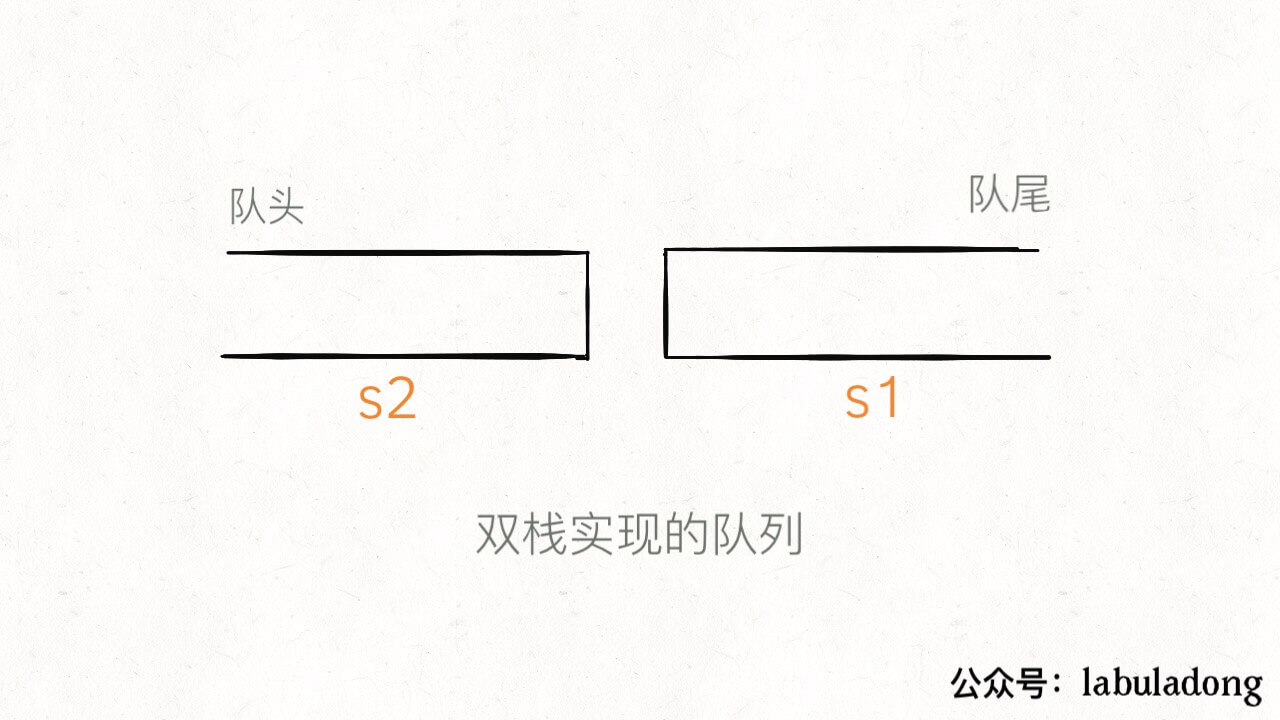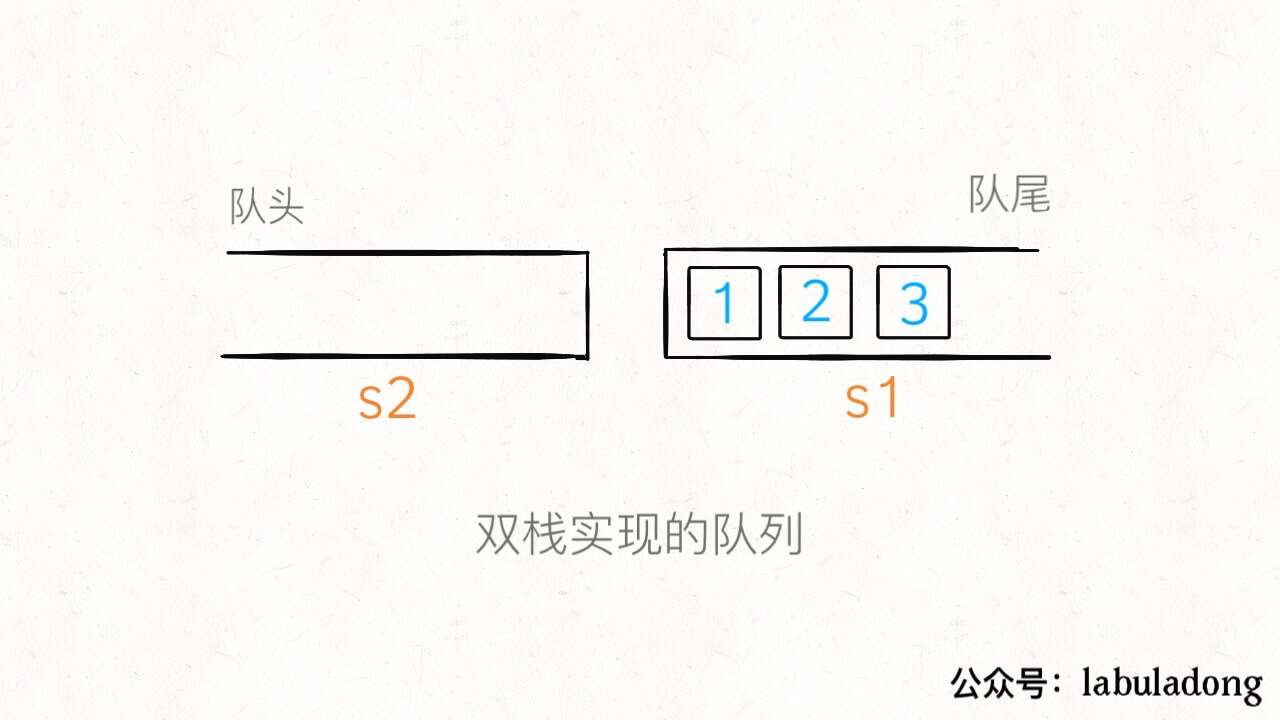232. Implement Queue using Stacks(栈实现队列)
请你仅使用两个栈实现先入先出队列。队列应当支持一般队列支持的所有操作(push、pop、peek、empty):
实现 MyQueue 类:
void push(int x) 将元素 x 推到队列的末尾
int pop() 从队列的开头移除并返回元素
int peek() 返回队列开头的元素
boolean empty() 如果队列为空,返回 true ;否则,返回 false
说明:
你只能使用标准的栈操作 —— 也就是只有 push to top, peek/pop from top, size, 和 is empty 操作是合法的。
你所使用的语言也许不支持栈。你可以使用 list 或者 deque(双端队列)来模拟一个栈,只要是标准的栈操作即可。
class MyQueue: def __init__(self): self.A, self.B = [], [] def push(self, x: int) -> None: self.A.append(x) def pop(self) -> int: peek = self.peek() self.B.pop() return peek def peek(self) -> int: if self.B: return self.B[-1] if not self.A: return -1 # 将栈 A 的元素依次移动至栈 B while self.A: self.B.append(self.A.pop()) return self.B[-1] def empty(self) -> bool: return not self.A and not self.B
class MyQueue: def __init__(self): self.stack1 = [] self.stack2 = [] def push(self, x: int) -> None: #push self.stack1.append(x) def pop(self) -> int: while len(self.stack1) != 0: self.stack2.append(self.stack1.pop()) top = self.stack2.pop() while len(self.stack2) != 0: self.stack1.append(self.stack2.pop()) return top def peek(self) -> int: while len(self.stack1) != 0: self.stack2.append(self.stack1.pop()) top = self.stack2[-1] while len(self.stack2) != 0: self.stack1.append(self.stack2.pop()) return top def empty(self) -> bool: return len(self.stack1) == 0 # Your MyQueue object will be instantiated and called as such: # obj = MyQueue() # obj.push(x) # param_2 = obj.pop() # param_3 = obj.peek() # param_4 = obj.empty()



1 class MyQueue { 2 private: 3 stack<int> s1; 4 stack<int> s2; 5 public: 6 /** Initialize your data structure here. */ 7 MyQueue() { 8 9 } 10 11 /** Push element x to the back of queue. */ 12 void push(int x) { 13 s2.push(x); 14 } 15 16 /** Removes the element from in front of queue and returns that element. */ 17 int pop() { 18 int v = peek(); 19 s1.pop(); 20 return v; 21 } 22 23 /** Get the front element. */ 24 int peek() { 25 if(s1.empty()) { 26 while(!s2.empty()) { 27 s1.push(s2.top()); 28 s2.pop(); 29 } 30 } 31 return s1.top(); 32 } 33 34 /** Returns whether the queue is empty. */ 35 bool empty() { 36 return s1.empty() && s2.empty(); 37 } 38 }; 39 40 /** 41 * Your MyQueue object will be instantiated and called as such: 42 * MyQueue* obj = new MyQueue(); 43 * obj->push(x); 44 * int param_2 = obj->pop(); 45 * int param_3 = obj->peek(); 46 * bool param_4 = obj->empty(); 47 */


